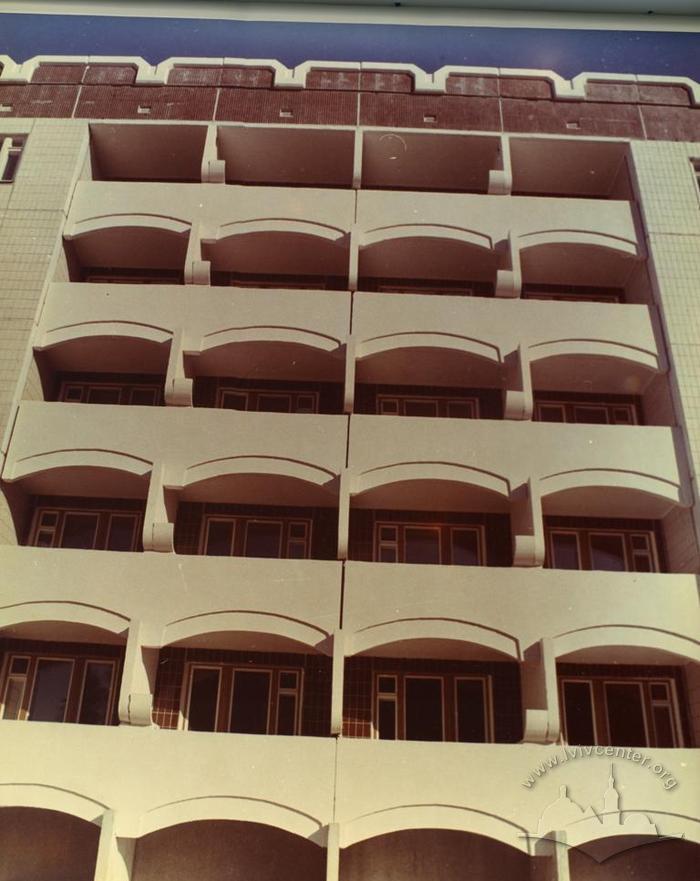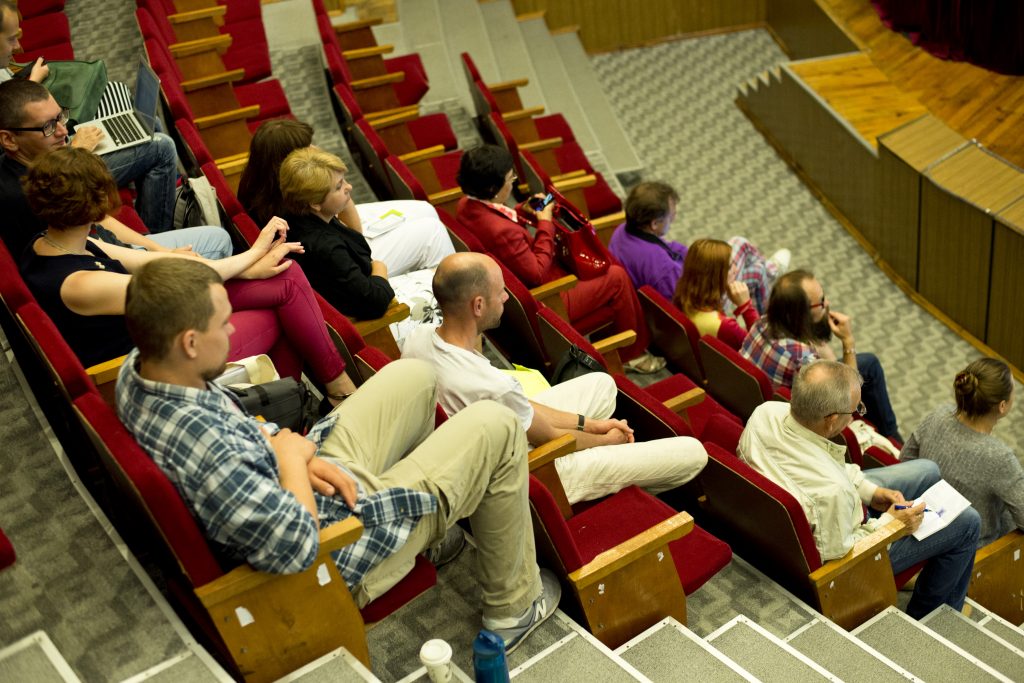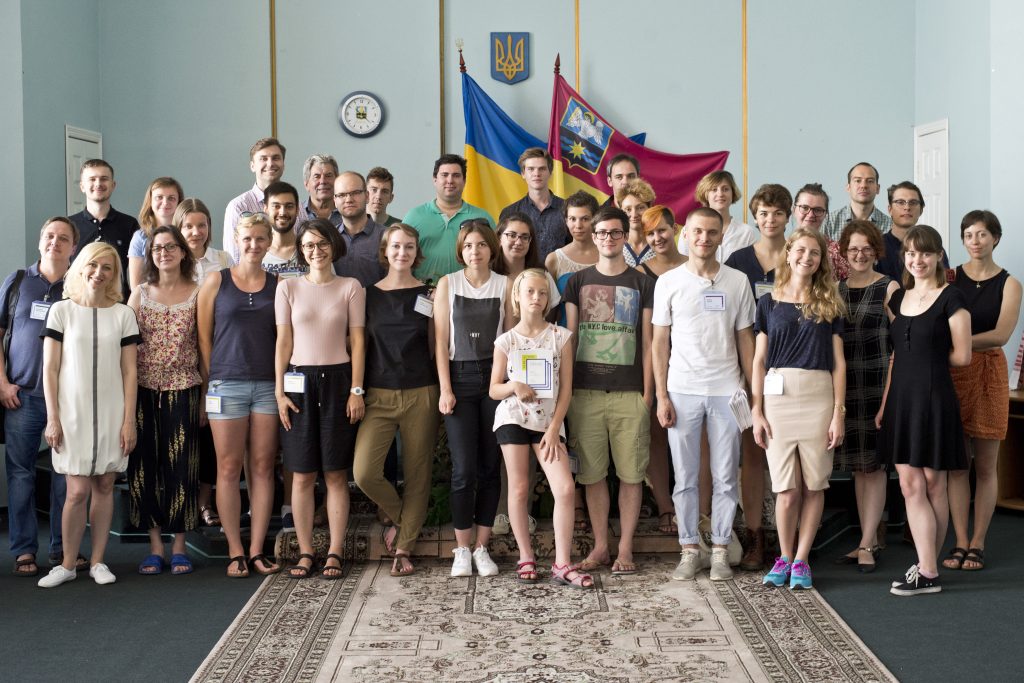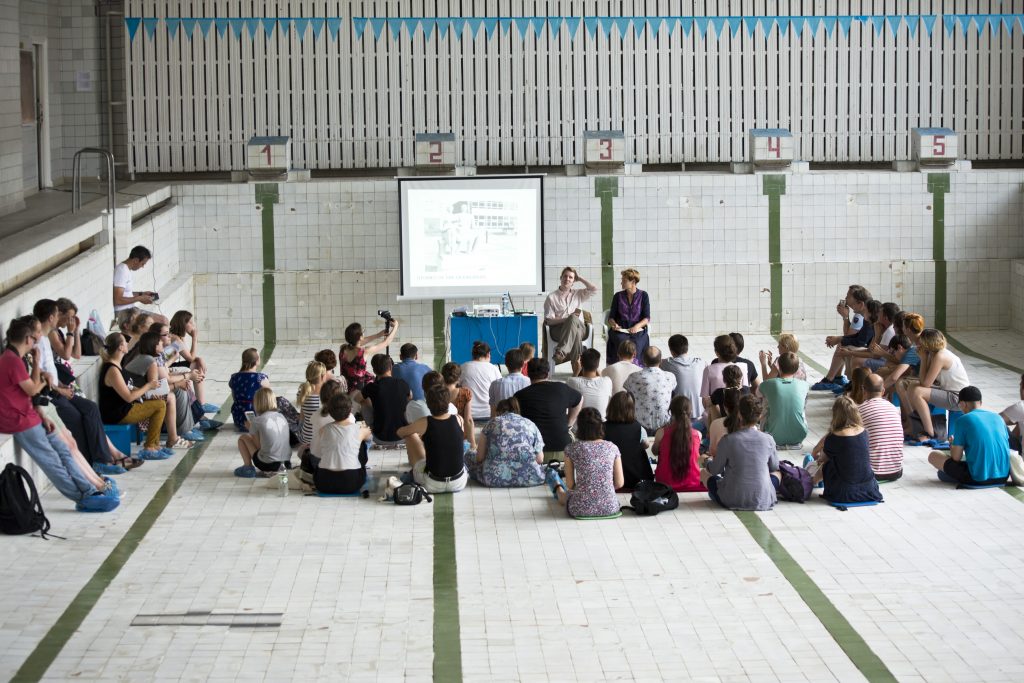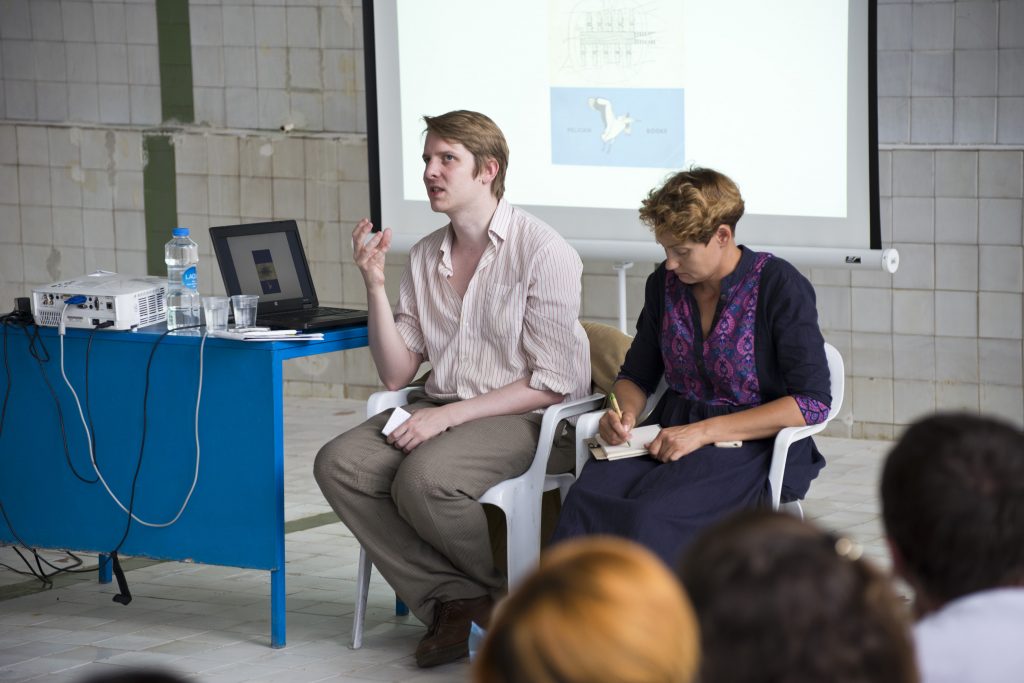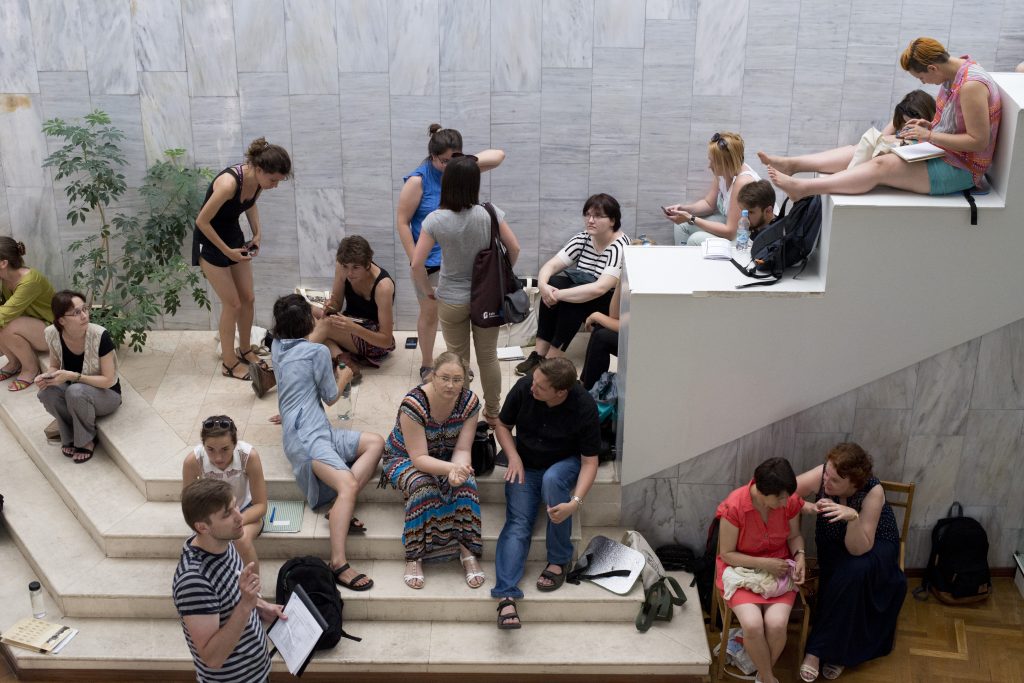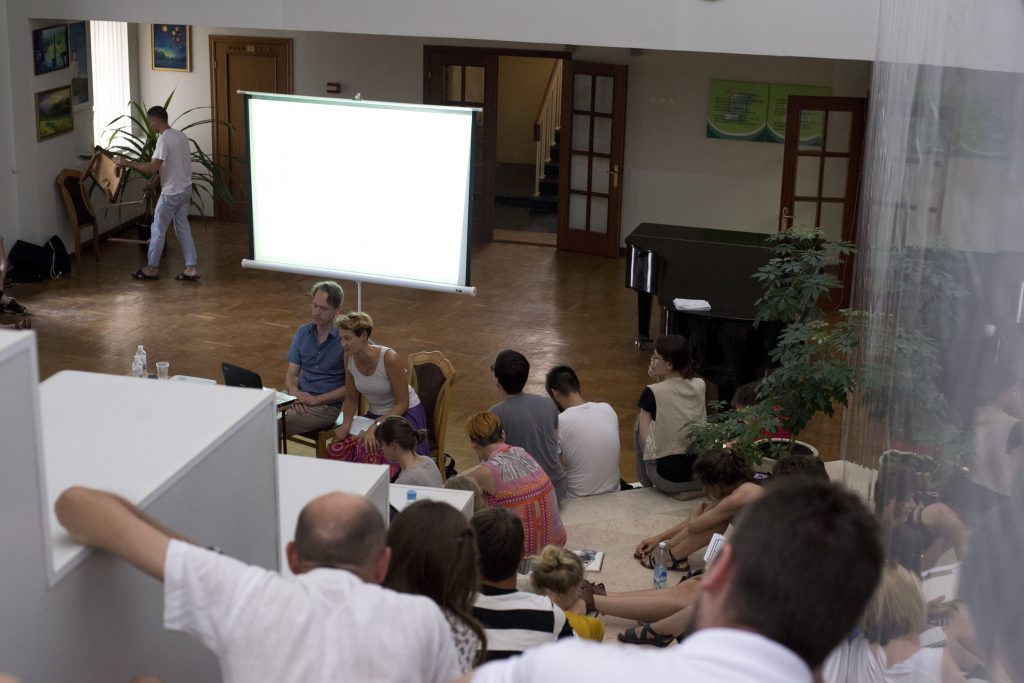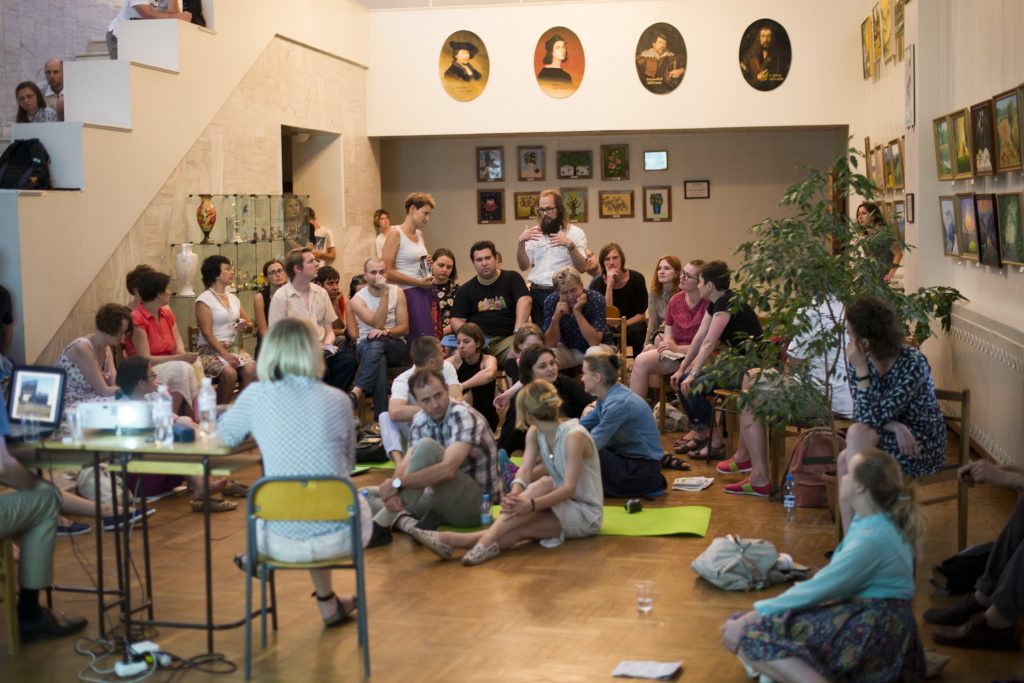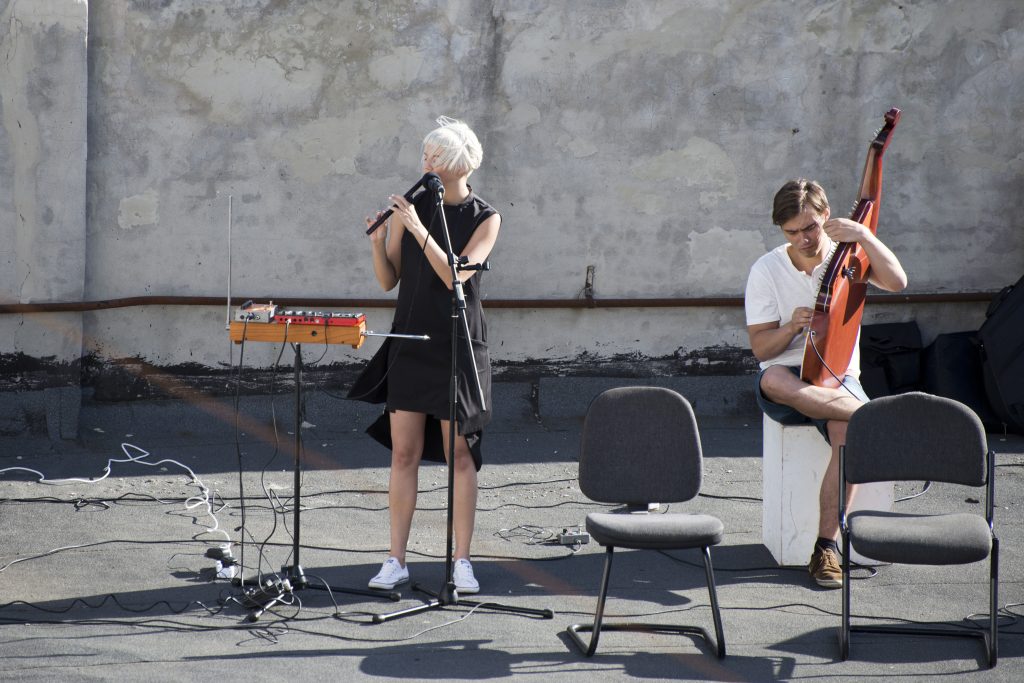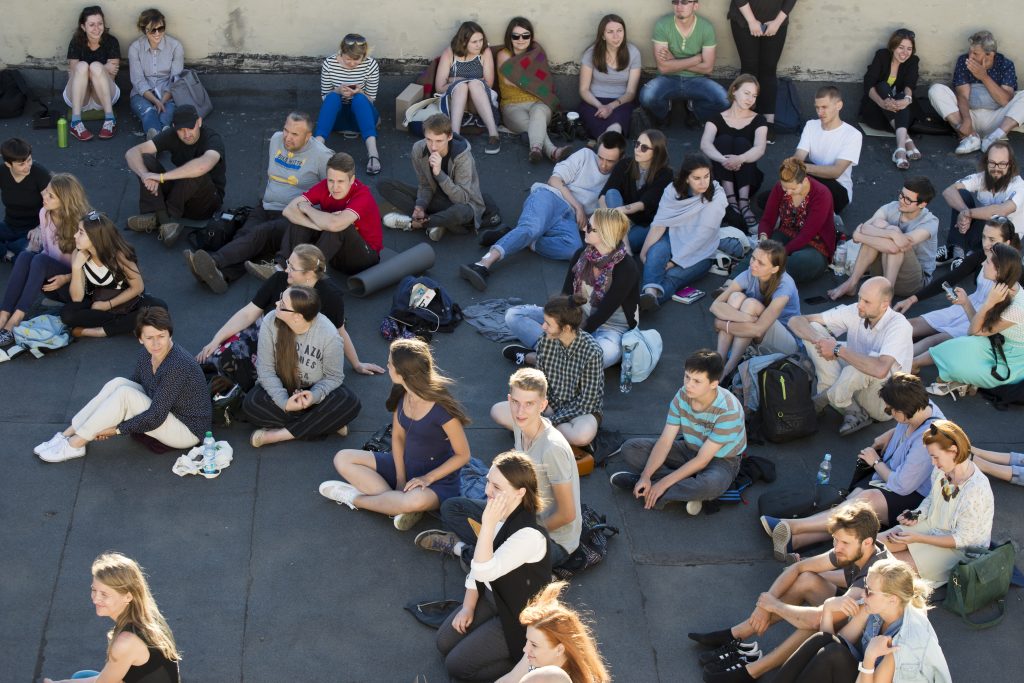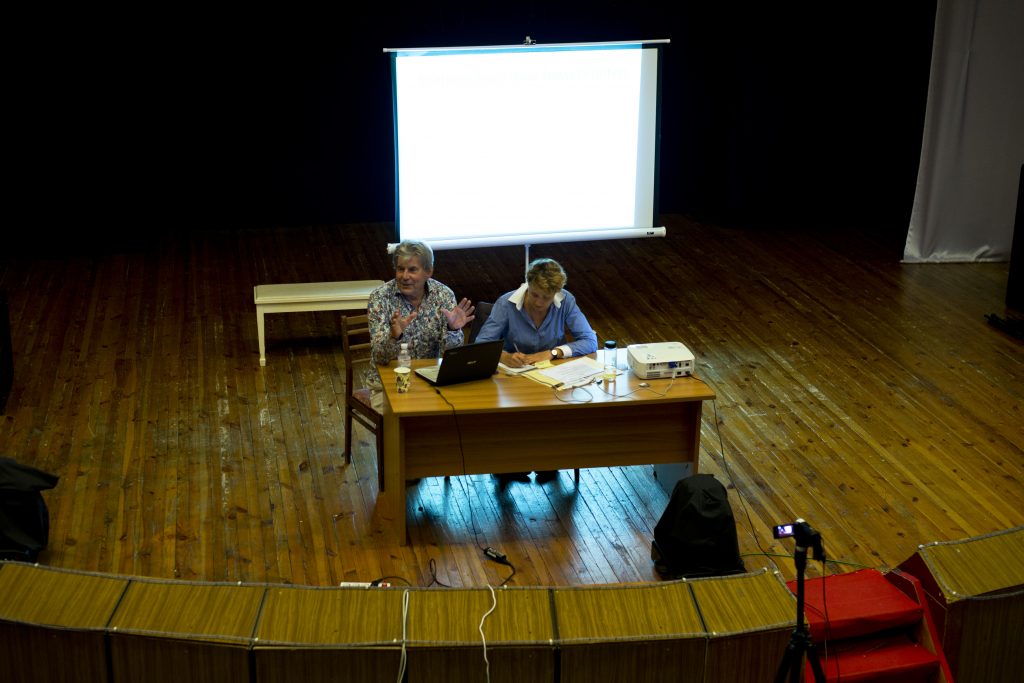The Idea of the City
June 29, – July 11, 2016
Slavutych, Ukraine
On June, 29, – July, 11, 2016, Slavutych hosted an interdisciplinary summer school "The Idea of the City: Reality Check" from the series "Urban Summer Schools: Visions and Experiences" of the Center for Urban History. It combines research and learning formats and establishes links between urban studies and urban history, and further with Humanities.
The subject for research for the school participants was Slavutych – a city in Kyiv region, an enclave on the territory of Chernihiv region. It was built after the nuclear disaster at Chornobyl nuclear power plant in 1986. It is the last planned city in the Soviet Union and the youngest city in the present day Ukraine. Exceptional circumstances of its establishment shaped the ideas and the implementation process of the project for a new city. Teams of experts from eight USSR republics were engaged into planning and construction works. As a result, Slavutych architecture manifests criticism of Modernist architecture combining international architectural context with socialist approaches and Soviet principles of regional peculiarities. Slavutych is the implementation of pursuits of the last generation of Soviet architects for environmentally sustainable architecture comfortable for living. It is also a new home to employees of Chornobyl nuclear power plant.
The goal of the summer school was to combine learning and research formats, to integrate methods and opportunities of different disciplines to study the city. The curriculum of the school focused on social, humanitarian, environmental, and economic prospects in planning and functioning of modern city with account for historical contexts. The example of Slavutych allowed analyzing implementation and experiences of such urbanistic and social concepts as planned city, utopian city, post-disaster city, eco-city, and mono-city in terms of different disciplines.
The work of the school took different research prospects in three study formats. Together, they conducted analysis and developed general vision of what present-day Slavutych is all about, to which extent it meets the idea of architects and what prospects the city has for the future:
- Study 1: Urban Practices, Memories and Perceptions.
- Study 2: Space and Ecology of the City.
- Study 3: Finances and Administration of the City.
Participants of the school were researchers from Ukraine, Slovakia, Hungary, Croatia, USA, Russia, Slovenia, Sweden, France, Lithuania, and Belarus. The lecturers of the school were experts in the fields of planning and studying the city, in sociology and finance: Kees van Ruyven ("Kees van Ruyven Stadsontwikkeling", Амстердам), Iryna Sklokina (Center for Urban History), Dmytro Kokorin (London Royal College, Institute of Russia, London), Nataliya Otrishchenko (Center for Urban History, Lviv; Institute of Sociology of the NAS of Ukraine, Kyiv), Tauri Tuwikene (Tallinn University, Tallinn), Bohdan Motuzenko (Kyiv), Viktor Maziarchuk (Center for Political Studies and Analytics "Eidos", Kyiv).
Chief coordinator of the summer school – YevheniyaHubkina, architect, researcher of the Center for Urban History, co-founder of the Urban Forms Center NGO and author of an architectural guide book on Slavutych. Coordinator of the school – ArynaStarovoytova, head of the city methods center at the Board for Education and Research at Slavutych City Council, DmytroSysoyev, coordinator of educational programs of the Urban Forms Center NGO, Yuliya Popova, program coordinator for Democracy at Heinrich Boell Foundation’s Office in Ukraine.
In addition to the specialized research program for students of the school, there was organized a public program for broad audiences with the lecturers VolodymyrUdovychenko (city mayor of Slavutych in 1990–2015, Ukraine), OlgaKazakova ("Institute of Modernism", Russia), OwenHatherley (reporter, UK), Anselm Wagner (Gratz Technical University, Austria), KateBrown (Maryland University, USA), Nataliya Zhyzhchenko (ONUKA, Ukraine), Mykhaylo Dumanskyi (Lviv Business School (LvBS) of Ukrainian Catholic University, Ukraine), KeesvanRuyven ("Kees van Ruyven Stadsontwikkeling", Netherlands), Roman Zinchenko ("Greencubator", Ukraine), Yevhen Nikiforov (photographer, Ukraine), Oleksiy Bratochkin (European College for Liberal Arts in Belarus), Inga Freimane (Northumbrian University, UK). Coordinator of the public program – OlgaKazakova, historian, architect, Candidate of Art Criticism, director of "Institute of Modernism" research and development organization, senior research fellow at the department for theory and history of architecture and urban planning of the New Age at Research Institute of the Theory and History of Architecture and Urban Planning.
Within the summer school, there took place a camp for children "Play in the City". During the camp, young Slavutych citizens explored the city together with the teachers. They studied its past, present and future, and had fun with the peers. The coordinator of the summer camp – Khrystyna Boyko (Center for Urban History).
Organizers:
Heinrich Boell Foundation’s Office in Ukraine, Center for Urban History and NGO Urban Forms Center.
In cooperation with Slavutych City Council.
Credits
Сover Image: 5 floor apartment building, Slavutych, 1987-1988. Local History Museum of Slavutych and Chornobyl NPP / Urban media archive
Image Gallery by Alexander Kupny
